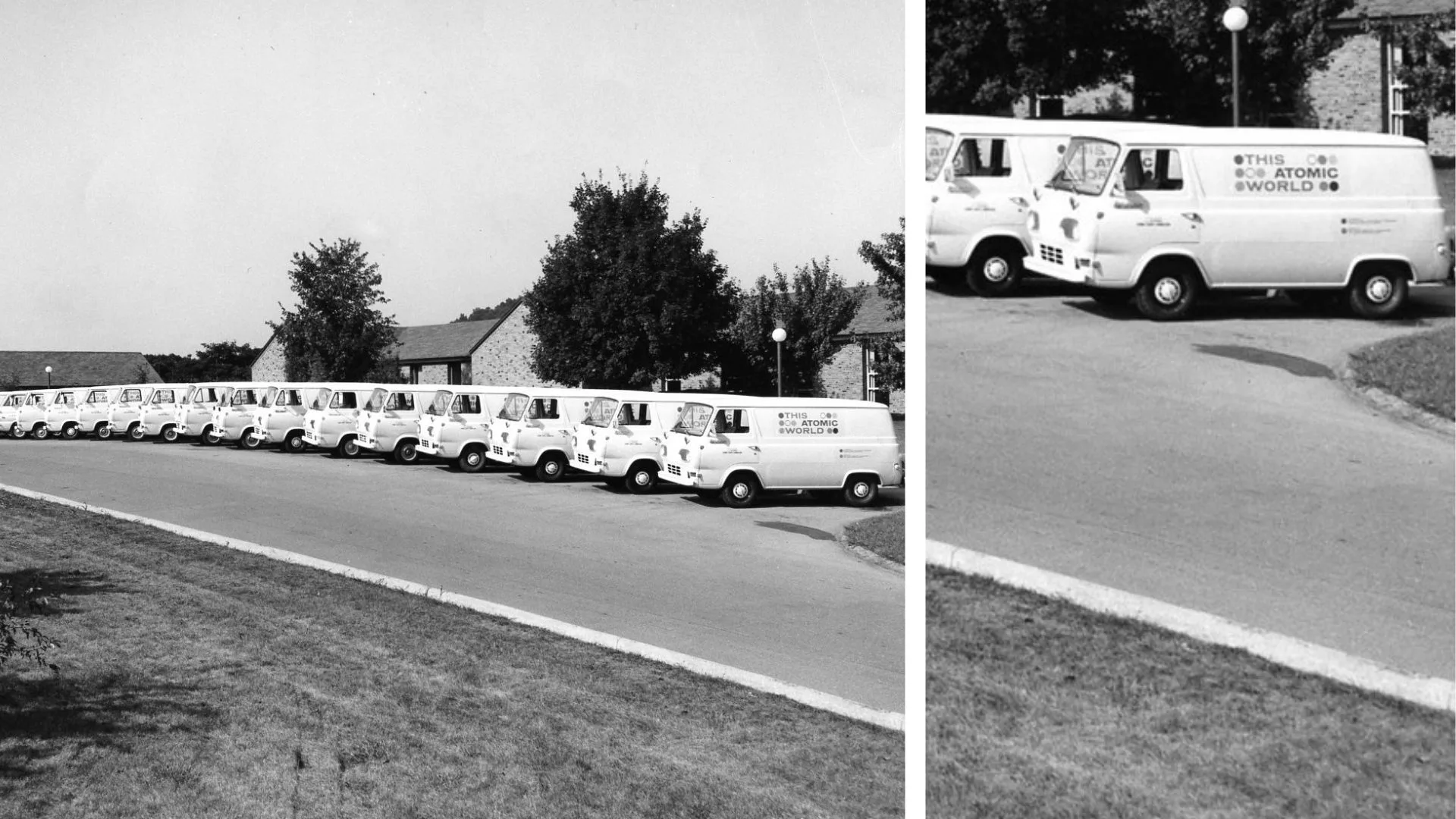With roots tracing back to The Manhattan Project during World War II, ORAU has spent nearly 80 years championing the potential of nuclear energy and educating others about its possibilities. As nuclear energy experiences a modern-day renaissance, ORAU stands ready to foster new opportunities that advance the United States' leadership in the energy sector.
This blog explains how ORAU has been involved with educating the public about nuclear energy for decades (starting with “This Atomic World”) and how we’re involved in where the industry is headed in the future.
What is nuclear energy?
ORAU has been engaged in discussions about nuclear science since its earliest days, with our roots firmly planted in the Manhattan Project. In the post-World War II era, the public was trying to understand ‘what is nuclear energy?’ It had just been used in the atom bomb to end the war, but what was this new technology? (For the answer to ‘what is nuclear energy?’ we recommend referencing the World Nuclear Association and the Nuclear Regulatory Commission.)
To help raise awareness and understanding, ORAU played a pivotal role in educating millions of students across the United States about the emerging field of nuclear science. In fact, our original name was Oak Ridge Institute for Nuclear Studies (ORINS)! Our passion for learning and sharing knowledge has always driven us to advance the nation's interests, and an early case in point is our mission to strengthen the United States’ grasp on nuclear energy. ORAU’s history is chronicled in the book “From the Beginning,” which includes an entire chapter dedicated to the Energy Education Division. This division was established to develop and deliver innovative curriculum, with “This Atomic World” being its inaugural program. Originally created in 1955 for the Atomic Energy Commission—the predecessor to the Department of Energy—this program exemplifies our longstanding commitment to education and progress.
Essentially, “This Atomic World” was a traveling teacher program created through National Science Foundation grants. In the days following WWII, the federal government prioritized educating the public about nuclear physics, radiation, nuclear power and the role of nuclear technology in modern society. If you know your history, “Atoms for Peace” may ring a bell. The Eisenhower administration announced this program to promote the peaceful use of nuclear energy.
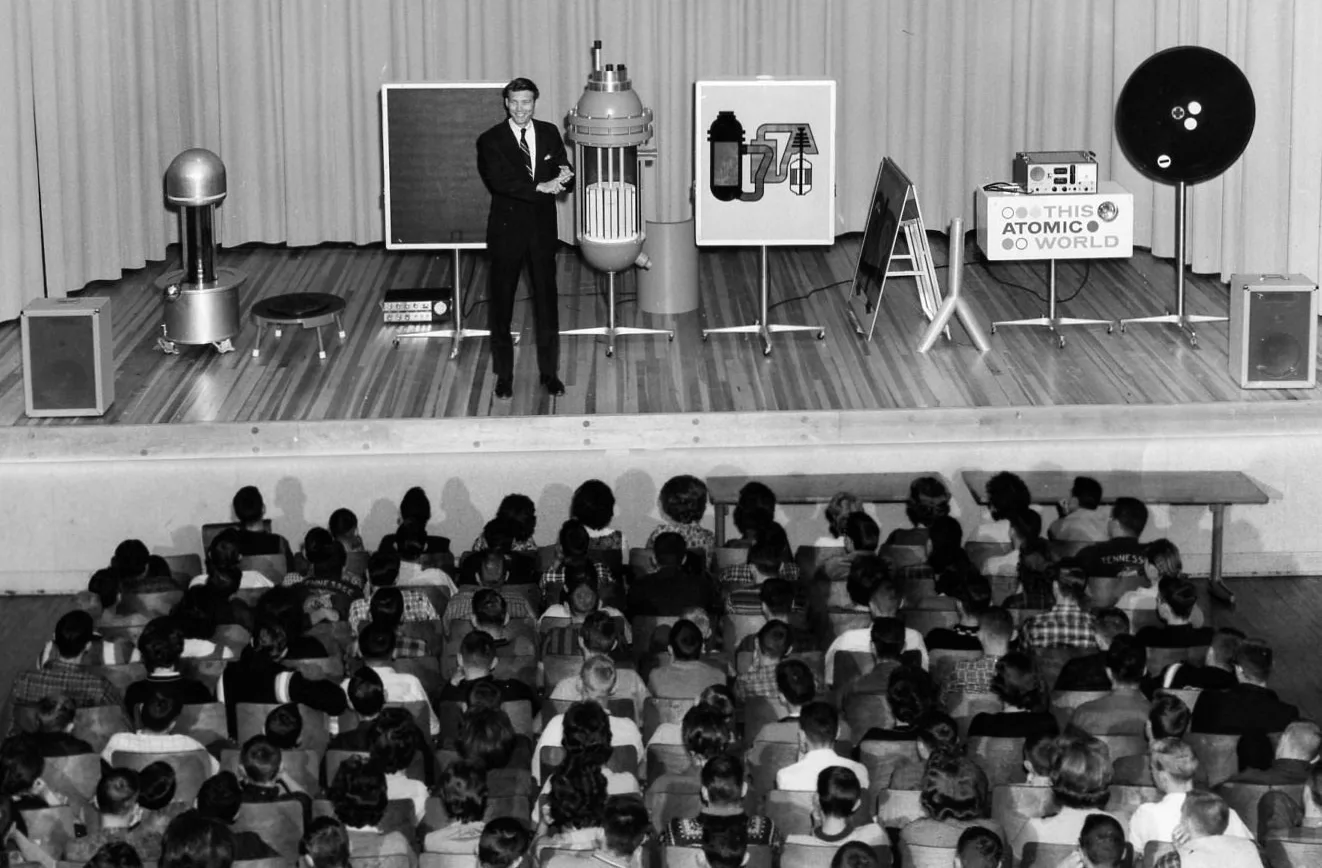
“This Atomic World” was a 50-minute presentation packed full of hands-on demonstrations.
“This Atomic World” was in step with the goal of “Atoms for Peace,” and it was very successful. By the early 1960s, the concept had achieved recognition among many educators as a useful science enrichment activity in high schools. At least 10 science-trained teacher-demonstrators hit the road every school year equipped with a vanload full of demonstration equipment. Each teacher was a one-man show. Typically, he or she visited 140 schools each year, which averaged to be about 15 or 16 schools every month. Sometimes, the presentation was a schoolwide general assembly. Other times, it was specific classroom lectures on nuclear topics. The traveling teachers mixed elements of entertainment and technical content. The stops even included the occasional Boy Scout meeting.
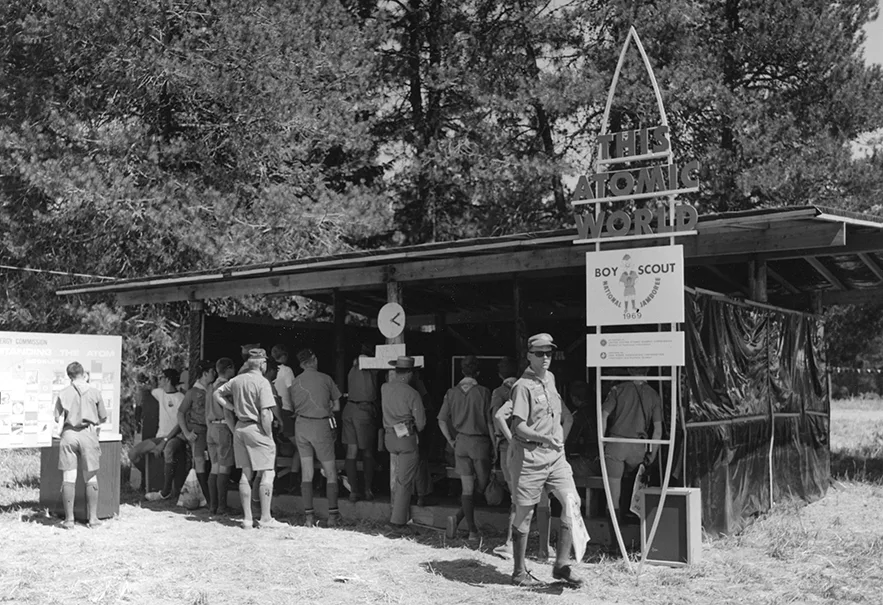
This Atomic World” (1969) made stops at schools, civic gatherings and Boy Scout meetings.
The popular reception of “This Atomic World” led to adjacent programs like the National Aeronautics and Space Administration (NASA) offering their own traveling demonstration called “Spacemobile.” The teachers in the NASA program were called lecture-demonstrators.
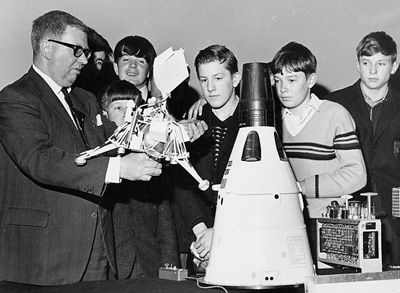
A “Spacemobile” lecture-demonstrator shows students a NASA spacecraft model in the mid-1960s. Photo credit: Oklahoma State University AESP Archive
By the late 1960s, utility managers across the country had taken notice of “This Atomic World,” and thought it advantageous to gain public acceptance for new power reactors. So, the curriculum shifted from overview, what-is-nuclear-energy material to more specific topics about nuclear power. Companies in Texas, New York, Michigan and North Carolina expressed interest in arranging a partnership in their service regions. By pooling private and public funds, ORAU could operate more units and spend more time in regions where nuclear plants were being announced.

Personal photos from ORAU retiree Marvin Peyton (pictured in the center). Peyton was the last trainer for “This Atomic World.”
With this kind of momentum, ORAU’s Energy Education Office became a spinoff from the Information and Exhibits Division, with plans to grow. “This Atomic World” was seen as the model for which a diverse set of educational services for the private sector could be developed. Thus, as the original curriculum retired, the program just rolled into a few other successive roadshows: “Energy Today and Tomorrow,” “Energy Adventure,” followed by “Gas Works.” Interestingly, the Institute for Behavioral Research at the University of Georgia evaluated the impact of “Energy Today and Tomorrow” and “found evidence that meaningful knowledge of energy issues was imparted and that attitudes toward energy problems were altered in a positive fashion,” according to the investigator, Laurence B. David in his master’s thesis. (See page 106 in “From the Beginning.”)
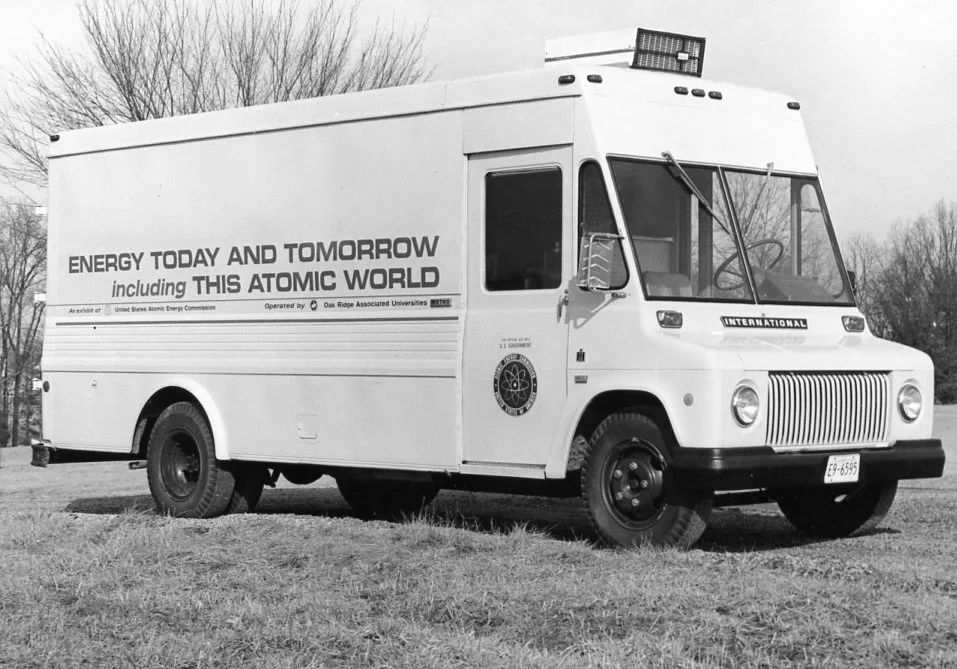
“This Atomic World” rolled into another educational presentation: “Energy Today and Tomorrow.”
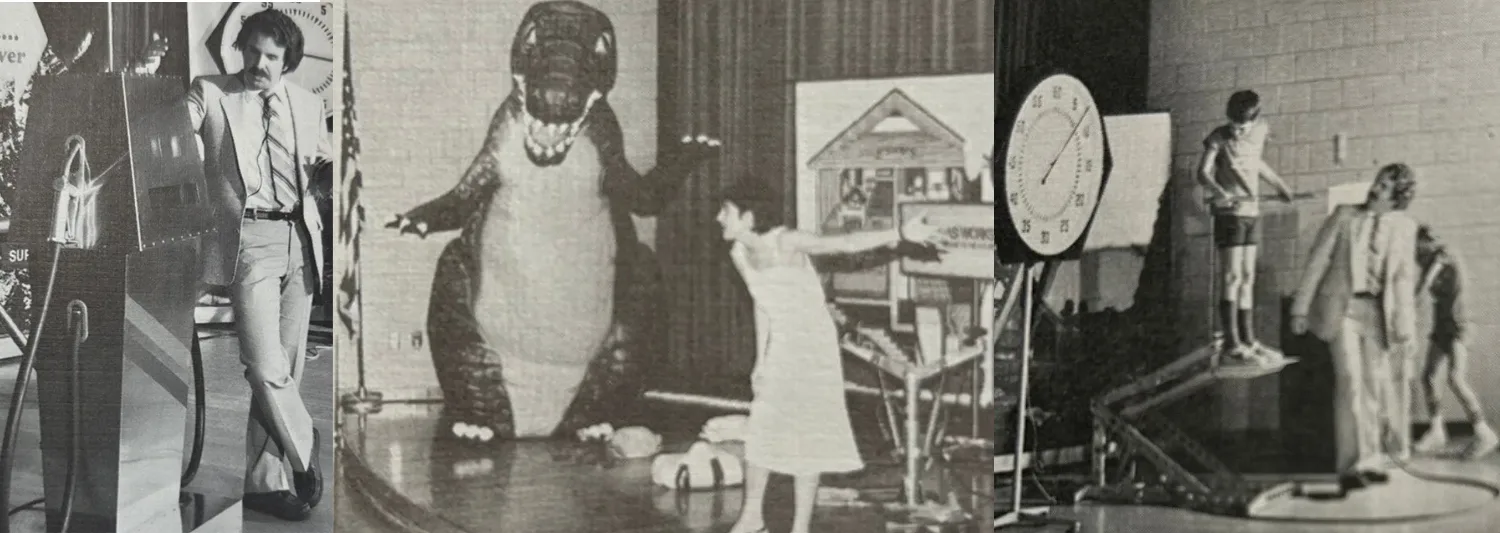
Left: Reginald G. Pump was an animated robot, Energy Adventure, 1981
Center: Gas Works, 1983, featured a nine-foot dinosaur
Right: Student learns about the economics of petroleum in Energy Adventure, 1982
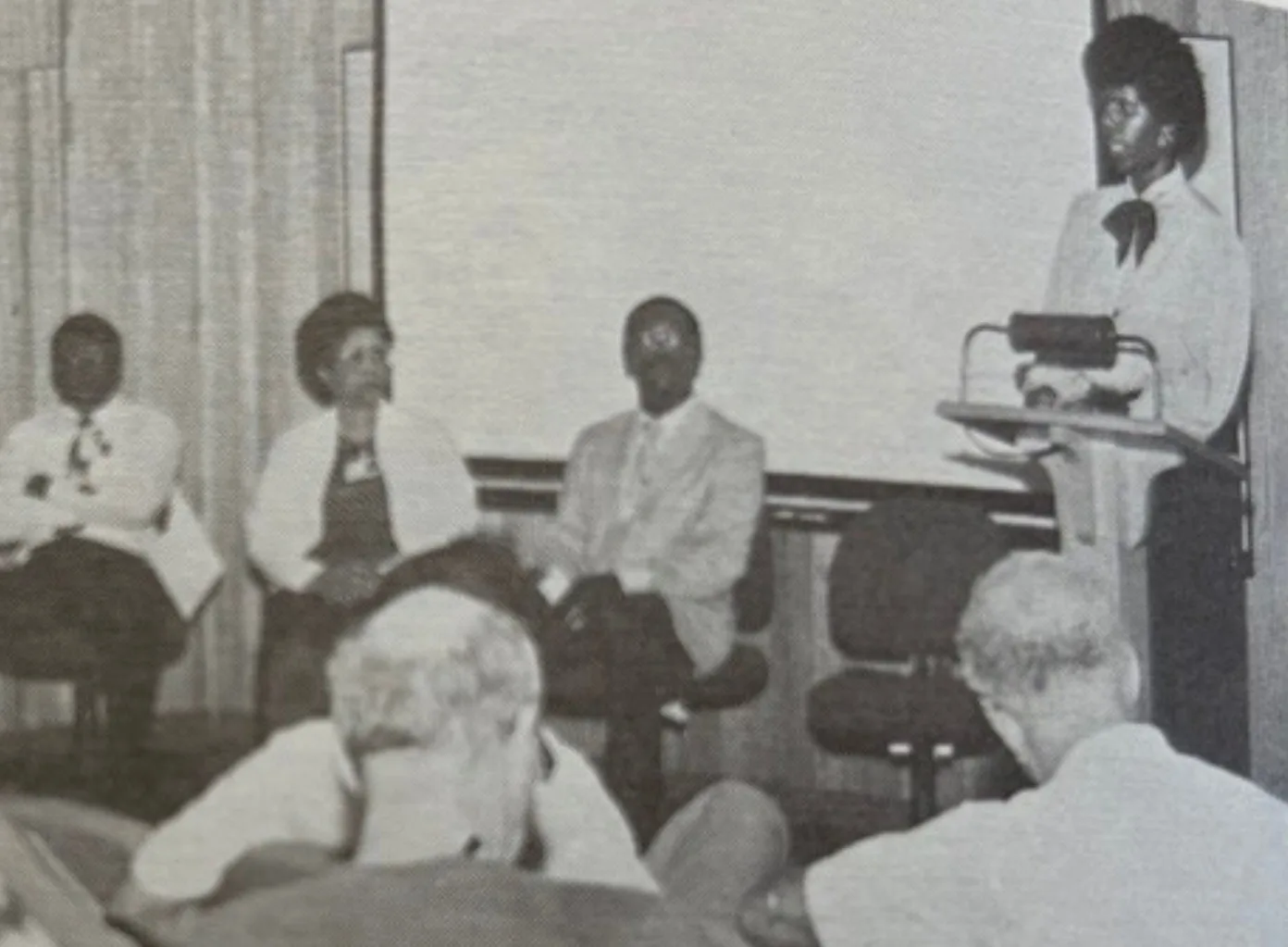
Teacher-Demonstrator moderates forum about computer-science technology improving math and science education, 1983
Over time, priorities evolved, leading to the full retirement of ORAU’s traveling teacher program in the late 1980s. During its impactful run, the program reached millions of students nationwide, sparking curiosity and expanding understanding of the applications and potential of nuclear energy.
Ongoing radiation safety training
Even as that program ended, ORAU’s education efforts around various aspects of nuclear and radiation continued. In fact, ORAU has been educating professionals about nuclear safety since 1948. Specifically, one of our original missions—as the Oak Ridge Institute for Nuclear Studies—that continues to this day is ORAU’s Professional Training Programs, which has instructed thousands of scientists, physicians, engineers, educators, regulators and personnel in a variety of radiation safety and health physics courses since our founding. We offer both in-person and online radiological science courses throughout the year. We even manage work focusing on employee exposure programs for former energy workers. ORAU’s strategy has always involved gaining a greater understanding of nuclear technology.
In our early history, ORAU was also a pioneer in nuclear medicine through our Medical Division. You can read more in our blog 7 important gifts the ORAU Medical Division gave the world. With everything the staff at ORAU’s Medical Division learned, they took that knowledge with them into the Radiation Emergency Assistance Center/Training Site (REAC/TS), which the U.S. Department of Energy (DOE) established in 1976 as a radiation accident management facility for emergency treatment and acute patient care in the event of a major radiation exposure. Now part of the Oak Ridge Institute for Science and Education (ORISE, which is managed by ORAU for DOE), REAC/TS is a DOE/National Nuclear Security Administration asset that provides 24/7 response and subject matter expertise on the medical management of radiation incidents. Through courses that include lectures and hands-on drills, REAC/TS is the domestic and international leader in nuclear disaster preparedness and training.
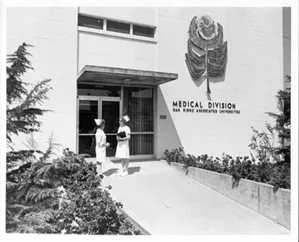
ORAU’s Medical Division operated from 1950 to 1974.
Looking ahead
Now, ORAU is energized—pun intended—by the renewed focus on nuclear energy. U.S. Energy Secretary Chris Wright has championed the launch of an American nuclear renaissance, and with growing interest from a new generation, the momentum is undeniable. ORAU is proud to play a key role in shaping the future of nuclear energy through several impactful initiatives.
Recognizing the critical national need for a skilled workforce in the nuclear energy industry, ORAU has launched the Partnership for Nuclear Energy (PNE) as part of its broader STEM Accelerator (OSA) initiative. This effort is designed to accelerate and expand STEM credentials within the nuclear sector, ultimately improving the nation’s STEM capacity and workforce readiness. As part of PNE, a preliminary Nuclear Energy Academic Roadmap (.PDF) has been developed to outline strategies for addressing workforce challenges in this field. The forthcoming comprehensive roadmap will serve as a detailed guide for workforce development efforts. Read our blog about 6 ways to help close the gap between the nuclear workforce supply and demand.
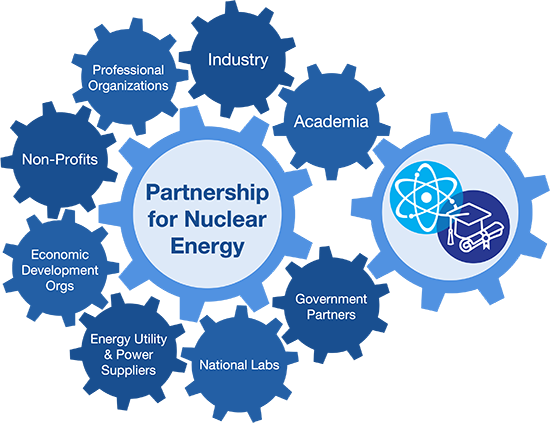
In alignment with this mission, ORAU is actively involved in the Tennessee Nuclear Energy Workforce Center, a program that emerged from Tennessee Governor Bill Lee’s executive order establishing the Tennessee Nuclear Energy Advisory Council. The center will be located on ORAU’s main campus in Oak Ridge and is focused on enhancing workforce readiness and fostering innovation in nuclear energy across the state, further strengthening Tennessee’s role in advancing the industry.
ORAU is also supporting emergency preparedness in the nuclear sector through its innovative online platform, Exercise Builder Nuclear. This tool is designed to assist emergency preparedness managers by streamlining the management of drills and exercises required by the Nuclear Regulatory Commission. By ensuring nuclear plants are well-prepared to respond to potential threats, ORAU is helping to safeguard the industry and its workforce.
Through these efforts, ORAU is committed to driving progress and supporting the next chapter of America’s nuclear energy story.
Since its inception, ORAU has been dedicated to advancing science education through innovative programs like the nuclear-focused teacher-demonstrator program “This Atomic World.” Our enduring commitment to education positions us as an ideal partner for organizations that share our vision of addressing the nation’s critical needs and shaping the future of nuclear energy.
Sources:
- World Nuclear Association
- Nuclear Regulatory Commission
- From the Beginning book
- ORAU Annual Report (1980, 1981, 1982, 1983)
- Interviews with ORAU retirees Ron Edmond, Deb McCleary and Marvin Peyton
